How to spot AI-generated text: with or without tools
Find out how to recognize content created by AI, even if you don't have specialized software.

AI-generated text is everywhere—can you spot it?
AI is now part of daily content creation, from writing articles and social media captions to drafting business reports. But can you really trust everything you read online?
With AI tools like ChatGPT churning out content fast, it’s getting harder to tell if something was written by a person or a machine. AI is useful, but it’s not perfect—it can get facts wrong, miss nuance, and sound repetitive. Without a human touch, misinformation spreads, and brands lose credibility.
So, how do you check if text is AI-generated? Whether you're a marketer, educator, or journalist, knowing what to look for is a must. This isn’t about rejecting AI—it’s about using it wisely to keep content accurate and authentic.
This guide will break down how to check if text is AI-generated, with or without tools. We’ve tested all the tools mentioned here ourselves, so you’ll get insights based on real results.
But here’s one thing—you’ve probably already noticed that AI-generated writing, when not properly reviewed by a human, sounds off.
💡 Pressed for time? Here’s the takeaway
- AI-generated text is everywhere, but it’s not always accurate, nuanced, or original.
- So how do you check if text is AI-generated? We put both manual spotting and AI detectors to the test.
- Manually, AI writing often feels repetitive, overly structured, and lacks personality.
- For tools, we tested ZeroGPT, Hive Moderation, and Content at Scale. Some worked better than others, but none were foolproof.
- AI isn’t the enemy, but it’s not perfect. Use it wisely—fact-check, edit, and add a human touch to keep content real.
Why does AI-generated writing sound off?
Even as AI models improve, AI-generated text often has subtle differences from human writing. Some common signs include:
- Overuse of generic words instead of specific, nuanced language
- Repetitive phrases with little variation
- Lack of personality or unique perspectives
- Overly structured sentences that feel too polished or robotic
These patterns emerge because AI models predict the most statistically probable words rather than writing with intentionality like humans do.
So, how to check if text is AI-generated?
There are multiple ways to determine whether content is AI-generated. These can be categorized into two main approaches: manual identification and AI-generated text checkers.
Manual ways to detect AI-generated text
Research suggests that while no foolproof method exists to identify AI-generated text, specific characteristics often appear in such content.
Sentence patterns in AI-generated writing
According to Daphne Ippolito, a senior research scientist at Google Brain, AI-generated text frequently exhibits unique punctuation patterns. This can manifest as an overuse of common words such as 'the,' 'it,' or 'is,' rather than more precise terminology.
In contrast, human-written text usually showcases a wider variety of sentence structures, incorporates diverse styles, and may even contain slang or typos.
"A typo in the text is actually a really good indicator that it was human-written," Ippolito notes.
Another characteristic to consider is the repetition of words and phrases. While newer models like ChatGPT-4 are designed to be more creative, earlier AI versions often reuse the same keywords and topics with little diversity.
Previously, outdated information was another way to detect AI-generated text, as models like ChatGPT used to rely solely on training data and couldn't browse the web. For example, before 2023, ChatGPT's knowledge was limited to information available until September 2021. If an article contained only pre-2021 data, it was a strong signal that the content was AI-generated.
However, as AI models now integrate real-time web browsing, this method is no longer as reliable. Instead, other AI-generated text detectors can provide more accurate identification methods.
2. AI-generated text checkers: Top tools to verify content
If manual detection isn't enough, several AI-generated text detector tools can help verify whether content was written by a human or AI. These tools analyze patterns in writing, sentence structures, and predictability scores to determine AI authorship likelihood.
To evaluate these tools, we subjected an article created by ChatGPT-4 to analysis. The article was generated with the prompt 'generate a 300-word article about content marketing.' The results are as follows.
ZeroGPT: AI-generated text detector
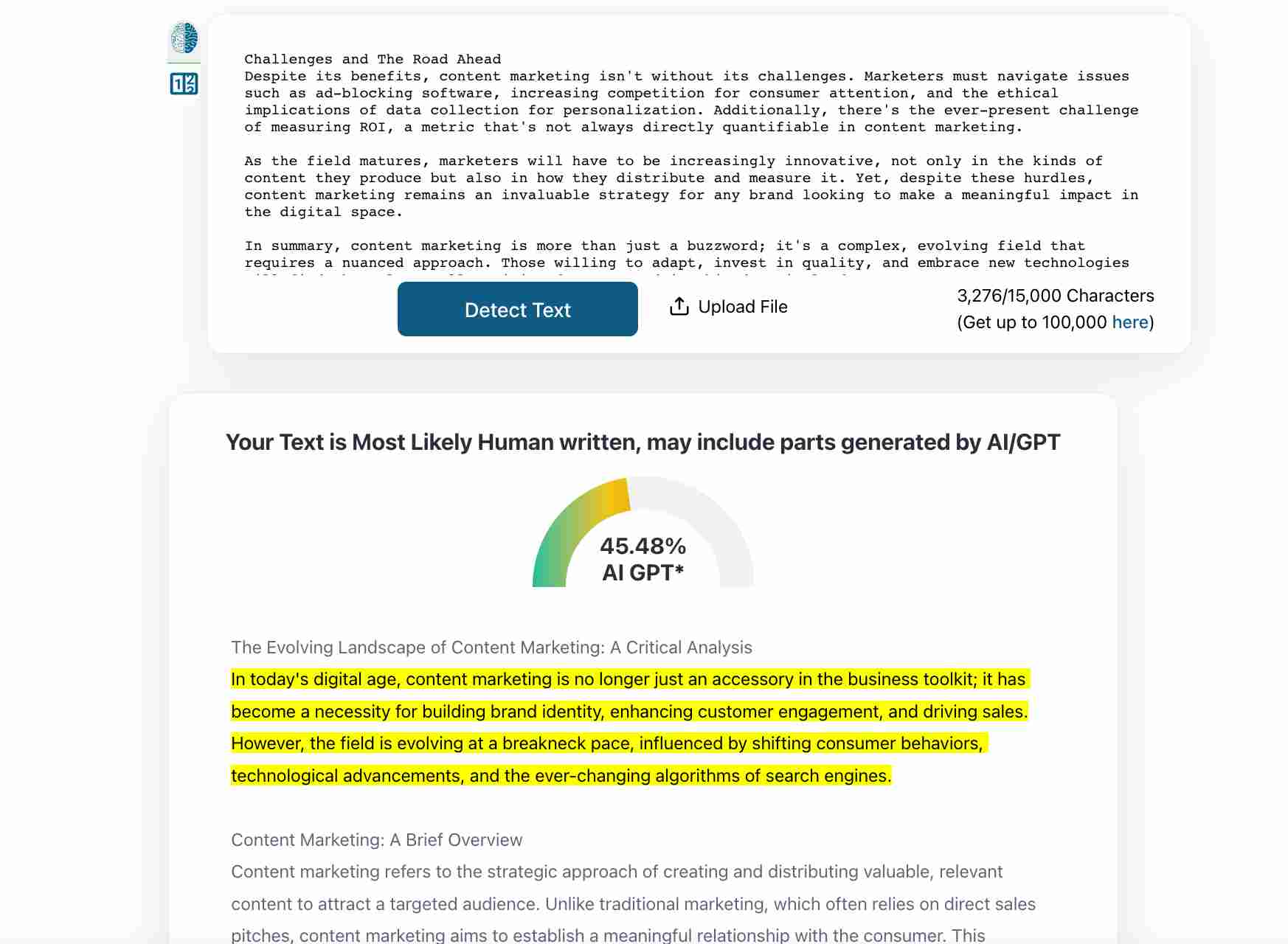
Founded by Edward Tian, ZeroGPT is one of the most widely used AI-generated text checkers, designed specifically to identify ChatGPT and other AI writing platforms.
- Offers free analysis for up to 15,000 characters
- $8.49 fee covers up to 100,000 characters
- In tests, ZeroGPT identified a 45.48% likelihood that a sample text was AI-generated
- Recommended by HubSpot and Search Engine Journal, with identification rates as high as 88.57%
Writer’s AI content detector
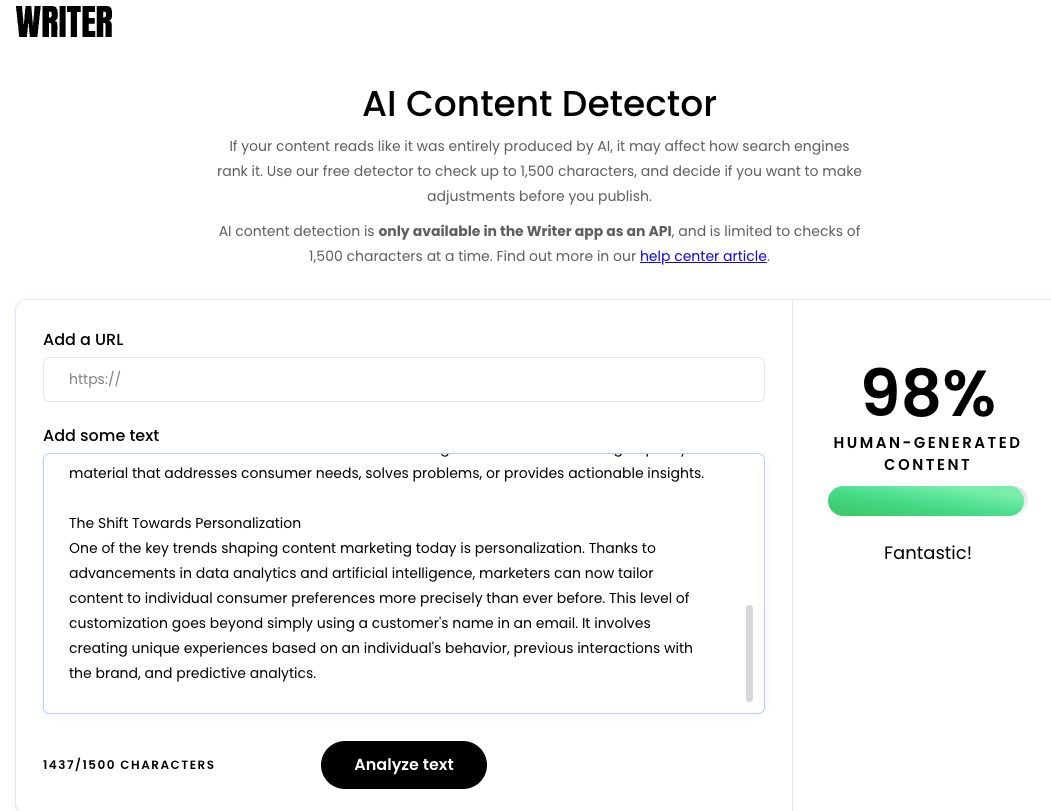
Initially a writing assistant, Writer has expanded its services to include an AI-generated text checker.
- Allows URL-based content detection
- Free version limits character input to 1,500
- Failed to identify AI-generated text in some tests
Hive Moderation AI detector
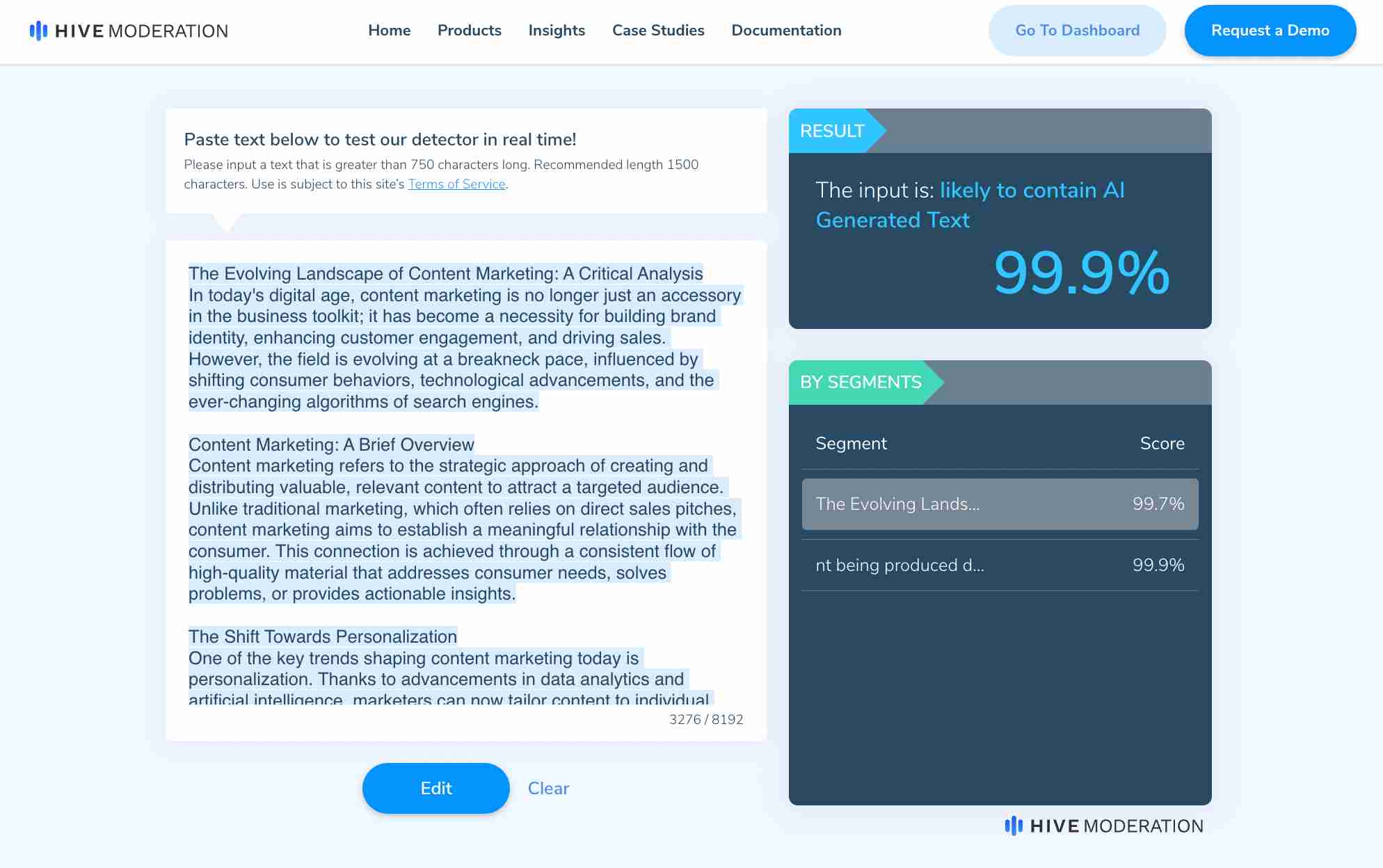
Originally focused on content moderation, Hive Moderation now includes an AI-generated text checker for both text and images.
- Available as a Chrome extension
- Free demo allows analysis of up to 8,192 characters
- Identified a 99.9% likelihood that a test sample was AI-generated
Content at Scale: AI-generated text checker
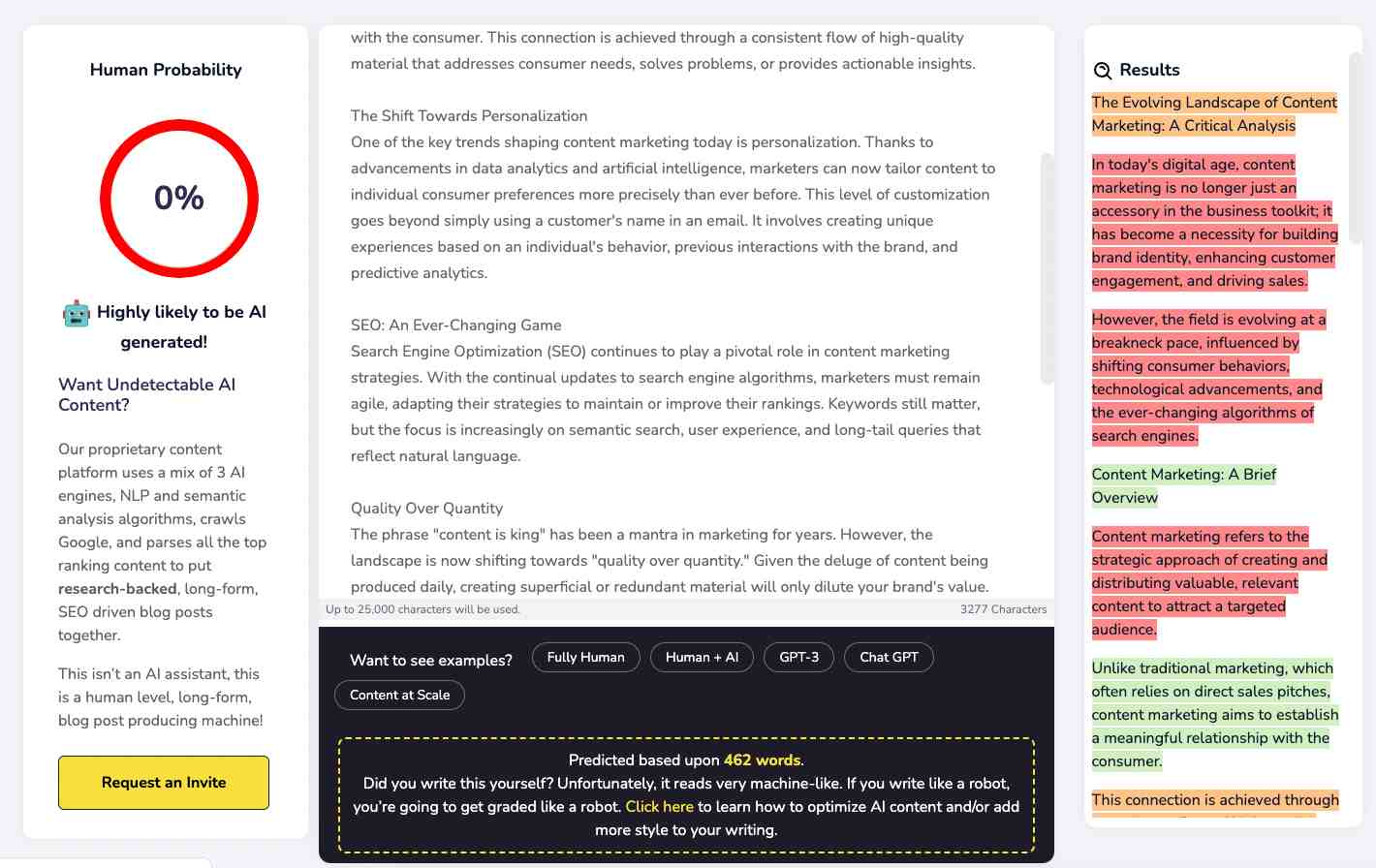
Known for providing AI writing support, Content at Scale has introduced an AI-generated text detector.
- No download required; accessible through the website
- Rated 0% likelihood of human authorship for AI-generated content
- Successfully identified 100% human-written content
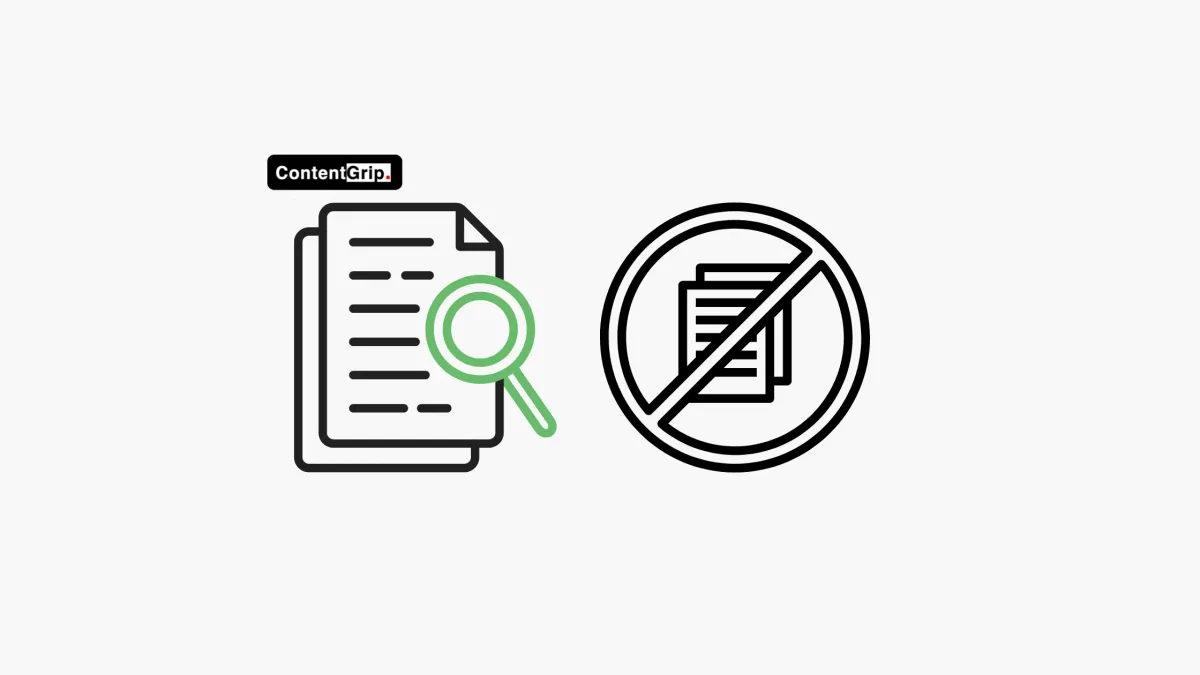
How to make AI-generated text look human?
If you're using AI tools for content creation but want the text to feel more authentic and natural, here are some practical ways to humanize AI-generated writing:
- Edit for natural flow – Break up robotic sentence structures and add conversational transitions.
- Introduce minor typos or informal phrasing – AI-generated text is often grammatically perfect, which can feel unnatural.
- Avoid repetitive keywords – AI tends to reuse words frequently, so manual editing is key.
- Fact-check and update references – AI may generate outdated or misleading information, so human oversight is crucial.
At the end of the day, human involvement remains vital in crafting content
While AI-generated text is becoming more sophisticated, human involvement remains crucial. Even Google indicates that AI-generated content isn't inherently bad—as long as it provides value, accuracy, and originality.
However, relying too much on AI can lead to:
- Generic, uninspiring content
- Lack of personality or emotional depth
- Potential misinformation or outdated references
By using AI-generated text detectors and manual evaluation techniques, content creators can ensure quality, authenticity, and credibility—without rejecting AI entirely.
AI is a tool, not a replacement. Whether you're a marketer, journalist, or educator, understanding how to check if text is AI-generated will help you stay ahead of the curve, ensure accuracy, and create content that truly engages human readers.
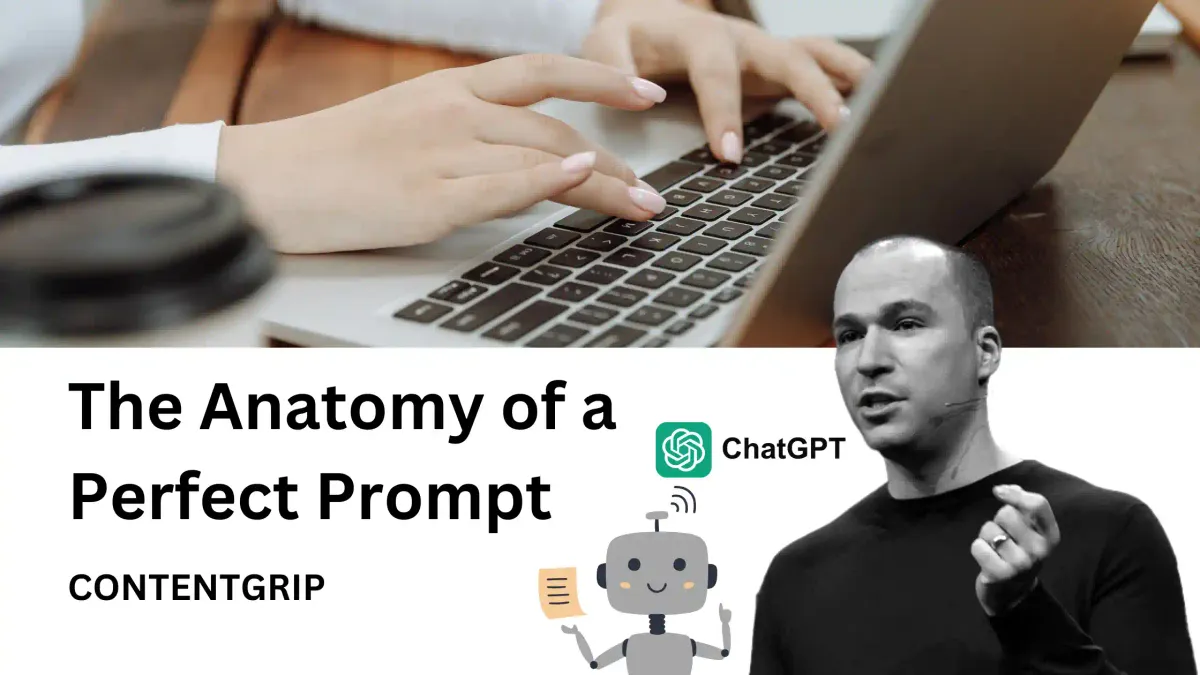
FAQs
How do you identify content generated by AI?
AI-generated text tends to be predictable, polished, and free of typos. It often repeats phrases and lacks a natural flow. If it sounds robotic or too perfect, it might be AI. Running it through an AI detector can help confirm.
How obvious is AI writing?
Unedited AI writing is usually easy to spot—it feels stiff, overly structured, and lacks depth. But when AI-generated text is well-edited, it can be harder to detect, though it often still lacks personality and nuance.
Does Google penalize AI-generated content?
No, as long as it’s original and valuable. Google only penalizes spammy, low-quality AI content designed to manipulate rankings.





